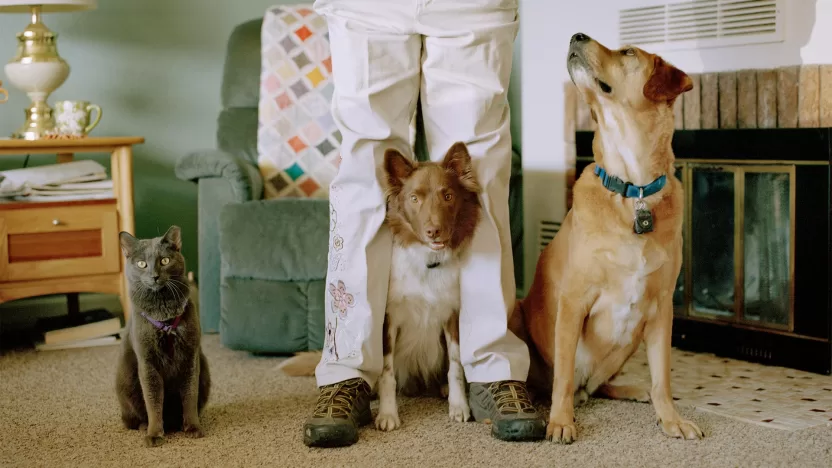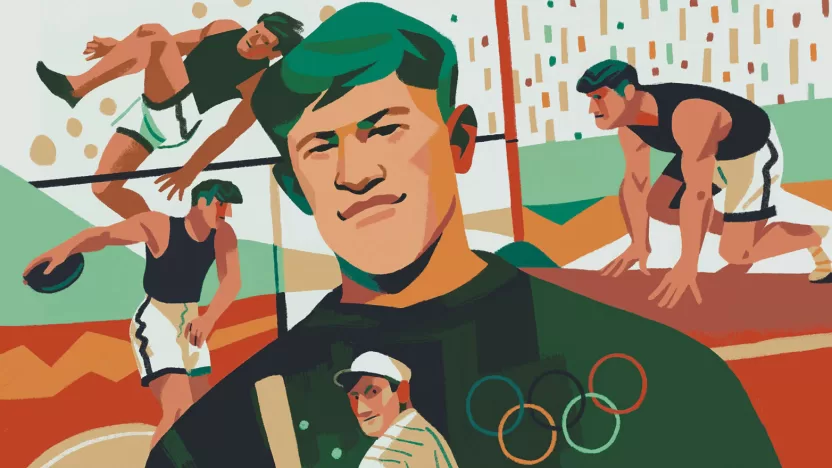Waiting on the world to change: for an affective futurability of places
In a time marked by uncertainty and a lost sense of future, the search for re-enchantment offers hope and transformative potential
by Alessandra Faccini
I belong to a generation born in the era of a “lost future” and an “out of joint” time, which ceased to be linear and, in some form, to exist. It is in Amlet’s well-known quote “the time is out of joint”, from Shakespeare’s homonymous tragedy and successively revisited by Jacques Derrida in Specters of Marx (1993), that we can glimpse a lament for injustice: something is not going as it should.
Lorenzo Cirnigliaro (Rome, 2001), in his essay Abandoning the Future, has included a reader’s perspective about his previous article, which appeared in Not, and where he explored the “post-hauntological” sentiment, peculiar to Generation Z, identified as a repeated attempt to escape from reality. The comment reads as follows: “I have always thought that every generation, whether for its own nature or for an evolutionary spirit, intrinsically feels the promise to be better, or at least happier, than their parents’. However, reading your piece, it seems to me that this promise has vanished”.
As these words resonate with me, I share a sense of discomfort upon hearing them. Indeed, I can only recognize myself in that distorted form of apathy that Simon Reynolds defines as the “delibidinization of tomorrow”, “hovering between an obsessive search for enthusiasm and the latent conviction that nothing can truly disappoint”.
The horizon of possibilities no longer appeals: factors such as eco-anxiety, work, existential precarity, and mostly dysfunctional relationships only encourage that depressive tendency that seems to characterize the attitude of younger people. Once we become aware of such hedonistic collapse, the question that still needs to be answered is: "Where do we focus our efforts to seek a new driving force?”
On one hand, the growing distrust in linear chrononormativity – a symbol and assurance, at least in the Western world, of unlimited and potentially infinite progress – seems today to be entirely justified. On the other, the field of futurability is not — and never will be — entirely within our grasp, as it primarily depends on gears and mechanisms over which humankind has little to no control. While we can speed up or slow down certain processes, as Greek mythology teaches us, ultimately, “Chronos devours his children”.
Hoping for the materialization of the next “Golden Age” in an indefinite future somehow delays its actualization in the here and now. Being just another regulatory ideal tasked with guiding our actions toward something better seems destined to remain confined to the realm of mere planning.
I identify the playing field not in time but in space, emphasizing its precise sense as a dimension already present and inhabitable; and that significantly shapes our idea of reality, as well as our daily experience of it. This approach might enable us to concretely contemplate renewed ways of living and being together within our own temporal horizon. This project promises to be capable of generating a wholly different kind of impact.
Recently, there has been much talk about “re-enchantment”; a concept at times overused, which has caught the attention of several fields of study: from art to technology, to literature, to political philosophy. Even some voices in marketing have proposed a particular version of re-enchantment, referring to it as an alluring emotional tool capable of provoking wonder in consumers, captivating them in a prodigious embrace. Such strategies rely on awe, the mysterious and challenging feeling to cognitively compute, which arises at the peak of pleasure and on the edge of fear, between surprise and confusion, wonder and perturbation. Eliciting this type of sensation is now a common practice in the realm of open-world experiences where, as Priscilla De Pace writes in an issue of her Una goccia newsletter, “contributes to depower the ego, to escape from the boundaries of the self, immersing oneself in a transformative experience centered on the contemplation of an exceptional and fearful stimulus”.
Not even digging too deeply into the collective memories, we can recall the most frequent occurrence of the adjective “enchanted” beside the noun “place”; a combination borrowed from the world of fairy tales that, as we grew, began to refer not only to imaginary landscapes but also to physical spaces, so surreal as to leave one speechless. The magic aspect inherent in enchantment thus persists, but does not necessarily imply the exclusion of realism. On the contrary, the hypothesis presented here is to consider enchantment as a precious reserve from which to draw on occasion to reconfigure reality differently.
Only in this way does the impossible become thinkable, and the present unpredictable. Perhaps, what is needed today is not to further escape real issues by throwing ourselves into the fictional world, no matter how much it may look like or enhance reality — virtual/augmented reality, sci-fi, cyberpunk aesthetics, utopias, and dystopias, etc —, but rather the identification and valorization of physically and emotionally charged spaces within which we can inscribe and experience renewed narratives of self and togetherness.
Re-enchantment: the action of enchanting once more what is already here among us, in response to that period of “disenchantment of the world”, a sickly product of capitalist rationality that has reduced the existing to economically measurable resources, including human life itself, and forcing people to live in a continuous present that excludes alternative models. Re-enchantment aims to “reconcile the quantifiable with the marvelous” and, in doing so, needs to look differently at spaces, both physical and imaginative, allowing us to recapture wonder and awe, in opposition to the strategies of “false enchantments”.
For the sake of clarity, I will refer to the cinematographic medium, more precisely to the realist current that has always sought to delve into the minds of young people, against the backdrop of a certain geographical and social landscape. Cinema, like literature and art in general, constitutes reservoirs of divergent potential, capable of generating friction against the status quo and allowing us to live vicarious experiences, potentially critical and transformative.

Limiting ourselves to the Italian context, Comizi d’Amore (1965) is one of the earliest examples. In this documentary, Pasolini travels across the country from south to north, interviewing men and women of all ages and backgrounds on a once-taboo topic: sexuality. It serves as a sort of anthropological investigation into the Italian economic miracle, where society is soaked in prejudice and anxiously seeking emancipation, yet still distant, sometimes petty, and obscurantist. The depicted societal image finds a striking counterpoint in the extraordinarily expressive landscapes that provide the backdrop for the interviews, which constitute the heart of the entire narrative. Michel Foucault will speak of these moments, particularly the street interviews where Pasolini captures passersby, briefly taking them for a moment away from their daily flow, as the “ideal theater of Mediterranean conviviality”, the most spontaneous, where “the great saga of the youth” unfolds around the nexus of eros, youth, and democracy.
On the same path is Futura (2021), a documentary directed by Pietro Marcello, Francesco Munzi, and Alice Rohrwacher. This collaborative investigation seeks to explore the ideas that teenagers and young adults have about the future. The directors embarked on a journey across the Peninsula, stopping in small and large urban centers, and rural areas to ask youngsters what they hope for, dream of, and fear. Some responses are practical and personal, while others are more abstract and collective, concerning the destiny of the nation and the nature of happiness. Futura offers a deep and sometimes disarming immersion into that in-between land that is adolescence. Despite the general discontent with the current situation, few of the young people in the documentary issue an effective call to action. A sense of futility and vagueness pervades most of the conversations. A group of students from Liceo Diaz in Genoa barely spoke out about the gravity of the events that took place in their own school during the 2001 G8 summit, hiding behind diplomatic clichés about the importance of moderation. Others, in university environments, speak the language of theory. Perhaps, the most passionate political statement is a fervent appeal for tax reform: “Life shouldn’t be just a matter of survival”. Although some interviewees argue that Italy is one of the worst places to live, the film immediately counterposes spectacular shots of the places these young people inhabit, not postcard landscapes, but the scenes that shape and populate their life experiences. This juxtaposition, perhaps one of the most admirable features of the 16mm footage, manages to shine a glimmer of hope, compelling a reconciliation with the urgency of changing the world so that we can all look towards a future, without saying a better one.
Made the same year as Futura, Atlantide is a film directed by Yuri Ancarani set on the island of Sant’Erasmo. The portrayed Venice is unprecedented and obscure, providing the contrast with the thin plot that revolves around the young Daniele, devoted, just like his peers, to the creed of boating enthusiasts. The lagoon’s periphery is an almost unknown universe for outsiders, far from the most famous canals and the entire tourist trade that is draining the city’s soul. However, Daniele’s tragedy – an angry and bored existence with an unsuspected self-destructive epilogue – is not the main focus of the film; rather, it is the scenic presence of the city, tasked with enduring intensities and conveying emotions. In this Venice, inherently dreamlike and supernatural, the characters’ vulnerabilities and fragilities emerge above all, highlighting the urgency of starting to rebuild the connection between us humans and the world we live in, and recognizing the importance of shared experiences.
The above-mentioned cinematographic examples share several significant common features: the incursion into young minds, the collective dimension, and the relevance of real locations where narratives come to life, imbued with perception and densely populated by the protagonists’ emotions. Here, something happens, and it happens simultaneously; bonds are strengthened through shared experiences, and the ability to hold each other and remain emotionally connected to the world is perhaps the only weapon against these “out of joint” times. Re-enchantment doesn’t necessarily have to coincide with an escape from reality, but rather, perhaps, with a slight shift in perspective, just a little further enough to allow ourselves to be surprised again by the infinite possibilities of change that can possibly arise, right here where we are.


